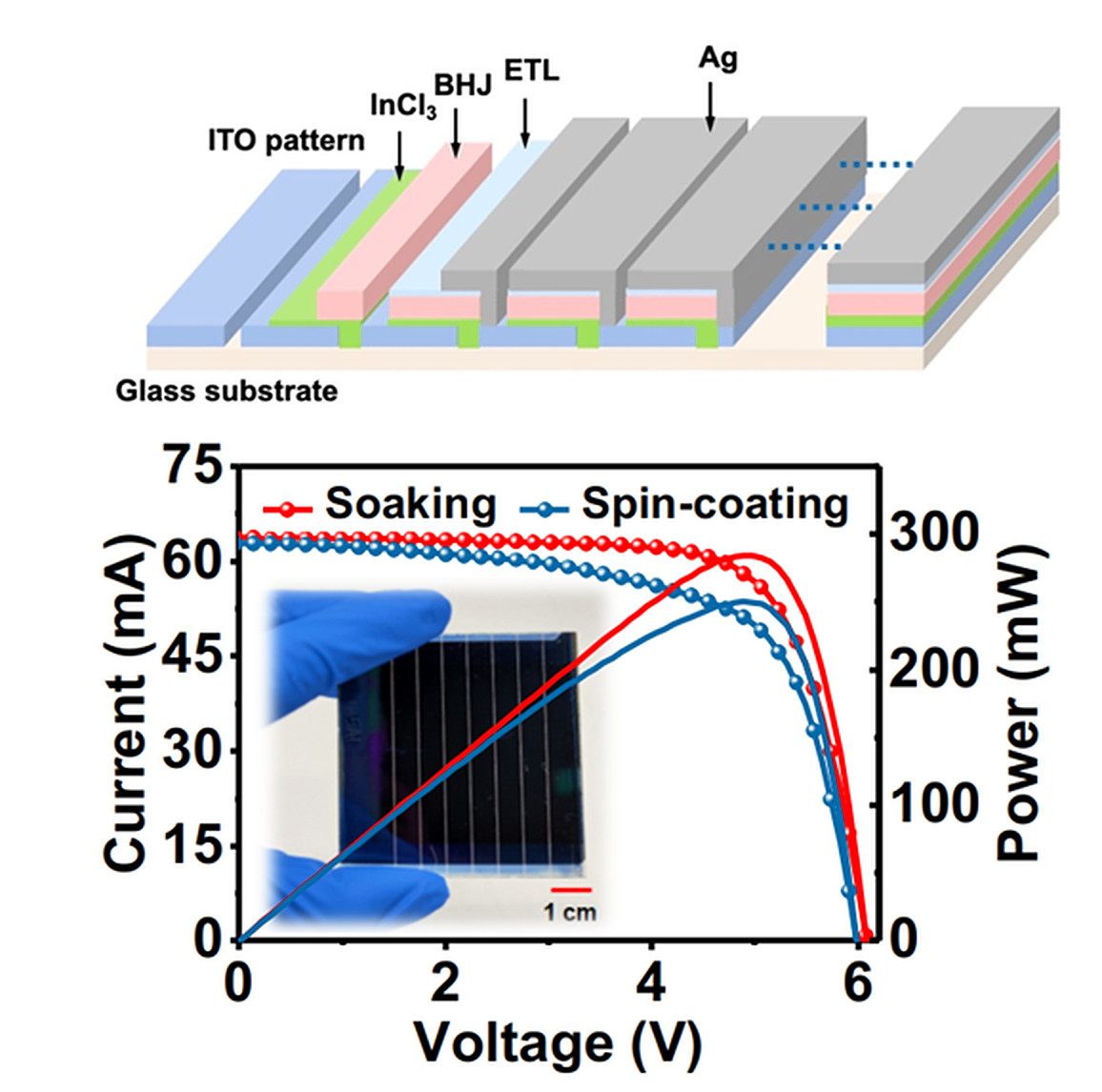
Scientists at the Zhejiang University in China have fabricated an organic solar cell (OSC) based on an indium tin oxide (ITO) hole transport layer (HTL) modified with an interfacial layer made of recycled indium chloride (InCl3).
The recycled material reportedly offers performance comparable or superior to HTLs based on indium tin oxide (ITO) or those made with PEDOT:PSS, a polymer known for its low cost and easy preparation properties.
“We have come up new approach to address the urgent challenges associated with the depletion of non-sustainable indium tin oxide (ITO) and its unstable charge-extraction interface for solar cells, as well as a range of optoelectronics,” the research's lead author, Chang-Zhi Li , told pv magazine. “The fabrication of a thin InCl3 layer could avoid the use of PEDOT:PSS hole transporting materials. Moreover, this InCl3–ITO electrode can be further recycled.”
The researchers said the InCl3 –ITO HTL has almost identical transmittance spectra as HTLs made of ITO alone and superior performance than PEDOT:PSS.
They built the solar cell with a substrate made of glass and ITO, the InCl3–ITO HTL, a bulk heterojunction (BHJ) structure, an electron transport layer (ETL) based on a conductive fullerene surfactant known as Bis-FIMG, and a silver metal contact.
The device was tested under illumination conditions and its performance was compared to that of two reference solar cells using HTLs based on ITO and PEDOT:PSS, respectively. The InCl3–ITO-based cell achieved a power conversion efficiency of 18.92%, an open-circuit voltage of 0.88 V, and a short-circuit current of 26.12 mA/cm2, and a fill factor of 79.34.
The PEDOT:PSS-based cell reached an efficiency of 18.39%, an open-circuit voltage of 0.88 V, and a short-circuit current of 25.24 mA/cm2, and a fill factor of 79.57. The device relying on ITO alone achieved an efficiency of 16.08%, an open-circuit voltage of 0.85 V, and a short-circuit current of 24.88 mA/cm2, and a fill factor of 73.10.
Furthermore. the scientists found that the InCl3–ITO-based cell was able to retain around 90% of its initial efficiency after 1,000 h. “In sharp contrast, OSCs based on PEDOT:PSS/ITO dramatically decayed to 78% of the initial PCEs in less than 100 h,” they said.
They also scaled up the technology via an aqueous soaking process and built a larger device with an active area of 18.73 cm2 that achieved a power conversion efficiency of 15.2%. “These results represent the top-level performance of binary OSCs and modules so far,” they stated. ” Interestingly, InCl3 –ITO remained stable with the merely changed surface energies under the continuous annealing.”
A complete description of the cell can be found in the paper “Robust and Sustainable Indium Anode Leading to Efficient and Stable Organic Solar Cells,” published in Advanced Materials.